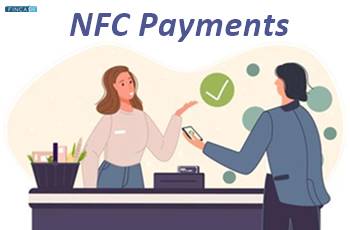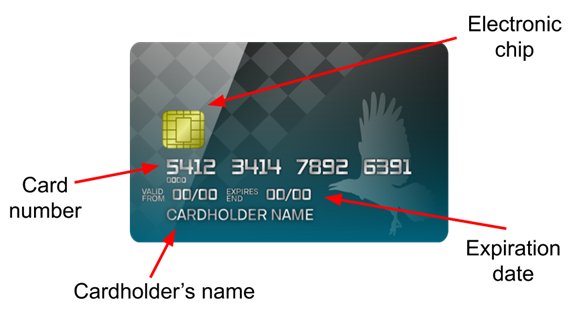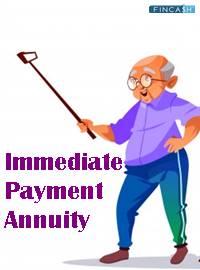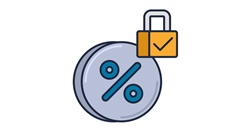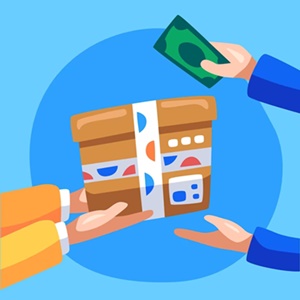
Table of Contents
- What is a Contactless Debit Card or Credit Card?
- PayPass and PayWave
- Why Use Contactless Payment?
- How to Make Contactless Transactions?
- The Bottom Line
- Frequently Asked Questions (FAQs)
- 1. Is there any transaction limit on contactless payments?
- 2. Is it possible for the customers to use their contactless cards at other merchants that do not accept contactless payments?
- 3. If a customer has more than one contactless card, might he be billed several times?
- 4. Is it possible that the customer completed a purchase without realizing it if she walked past the reader?
What is Contactless Payment & How Does it Work?
India is the fastest-growing digital payments Industry, with a 5x rise in contactless payments in just five years. The COVID pandemic has resulted in a massive increase in digital payments, propelling India ahead of many other cash-light nations across the world.
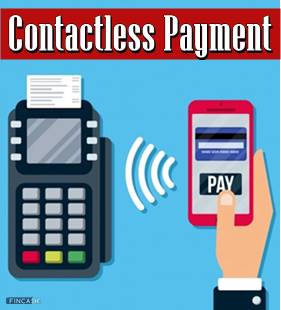
Due to the simplicity, speed, and security of contactless transactions, Indians are rapidly flocking towards them.
What is a Contactless Debit Card or Credit Card?
Contactless Debit Cards are a speedier method to pay with your credit or Debit Card at participating businesses for purchases under Rs.2000. Instead of swiping your card at the counter, just wave or touch your card on the contactless terminal to pay without entering a PIN. When cards are waved near a POS terminal, radio transmission is used to establish contact.
PayPass and PayWave
An ideal MasterCard contactless payment option, a PayPass transaction is one in which you authorize a transaction by tapping your card on a contactless terminal and selecting the 'credit' or 'debit MasterCard’ option.
Unlike PayPass, PayWave is a visa contactless payment option. It is a point-of-sale payment option that allows you to pay using Visa cards or a mobile device. Instead of swiping the card or presenting it to a cashier, you simply have to wave the card or mobile device in front of the secure scanner at checkout.
Both of these options use NFC technology to conduct contactless transactions. PayPass and PayWave both are made up of a contactless chip, an NFC antenna, and a magstripe. An antenna is integrated into the plastic of these cards. When a contactless card is brought close to a PoS machine, it securely sends purchase data to and from the reader.
When compared to typical card swipe payment methods, tap and pay payment takes far less time, making the transaction process quicker and more convenient. The transaction is completed in a matter of seconds, and you don’t have to enter the PIN if the transaction limit is less than Rs. 2,000.
Talk to our investment specialist
Why Use Contactless Payment?
With the rise of social distancing norms, contactless payments have become the preferred method for many consumers. India, which is predominantly a cash-based Economy, has seen a significant shift in both purchasing habits and payment methods.
While digital payments were on the horizon, the pandemic push has prompted a large portion of the populace to switch to contactless transactions. Mobile wallets and UPI-based transactions quickly became the preferred payment method for many. Both consumers and businesses are quickly adopting contactless debit cards and other methods to make everyday purchases.
From the consumer point of view, contactless payments are the easiest mode for quicker transactions and hassle-free experience, also a more reliable and secure mode of payment, flexible with diverse loyalty benefits.
From the business point of view, it offers better operational Efficiency with no extra cost, a seamless customer experience with fraud protection.
How to Make Contactless Transactions?
You can use both e-wallets or RFID-enabled (Radio-frequency identification) cards to make contactless transactions.
Contactless cards use the NFC technology that falls within RFID. However, NFC only works when there is not a massive distance between the device or card and the POS terminal. The idea behind this condition is to eliminate the risk of your device or card accidentally paying for somebody else’s transaction.
As far as e-wallets are concerned, they are apps that you can download on your smartphone. Even they use NFC technology. You will have to download the app, link your card to the account to make the transaction. Such a contactless transaction can also be done through a smartwatch and other wearable devices.
However, keep in mind that both of these methods may have limits on transactions set by your card issuer or Bank. Generally, these limits vary as per the financial institute. Although retailers might have limits to safeguard against frauds, there are many that still allow larger transactional amounts. Some payments, with a specific value, may also need a signature to get the transaction approved.
The Bottom Line
With the rise of social distancing norms, contactless cards have become the preferred payment method for many people. Most people quickly adopted mobile wallets and UPI-based transactions as their choice of payment.
In the past year, the prevalence of tap payments has exploded. Regulating these transactions, however, is critical. Furthermore, voice-enabled payments are likely to gain traction in the near future, since they have the ability to elevate the contactless payment experience to new heights.
Frequently Asked Questions (FAQs)
1. Is there any transaction limit on contactless payments?
A: Yes, payment is allowed through contactless mode up to Rs.5000 for a single transaction.
2. Is it possible for the customers to use their contactless cards at other merchants that do not accept contactless payments?
A: Yes, customers will be able to use their cards for standard DIP or swipe transactions at merchants that do not support contactless payments.
3. If a customer has more than one contactless card, might he be billed several times?
A: No, contactless readers only work with one card at a time. If the customer's wallet has more than one contactless card, the customer will be prompted to choose one to pay with.
4. Is it possible that the customer completed a purchase without realizing it if she walked past the reader?
A: No, the customer's card must be waived for more than half a second within 4cm of the card reader, and the store must first input the amount for you to authorize.
All efforts have been made to ensure the information provided here is accurate. However, no guarantees are made regarding correctness of data. Please verify with scheme information document before making any investment.


